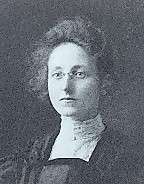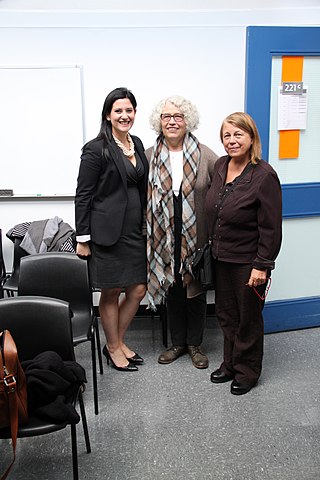Related Research Articles
Agnes was a Birmingham, Alabama photography gallery from 1993 to 2001. Shawn Boley, Jon Coffelt and Jan Hughes opened the gallery with the mission of attempting to raise awareness of social issues — such as cancer, AIDS, death and dying, the environment, homelessness, ethics, racism, classism, imprisonment — through photojournalism, film, video, poetry, and book arts. Controversial, Agnes was picketed on several occasions, one of which resulted in a USA Today article on December 5, 1994.

Lisette Model was an Austrian-born American photographer primarily known for the frank humanism of her street photography.
George Steeves is a Canadian art photographer noted for his highly personal work. He has been called by art historian and curator Martha Langford, "among the foremost figures of contemporary Canadian photography."
Arnaud Maggs was a Canadian artist and photographer. Born in Montreal, Maggs is best known for stark portraits arranged in grid-like arrangements, which illustrate his interest in systems of identification and classification.

Myra Albert Wiggins (1869–1956) was an American painter and pictorial photographer who became a member of the important early 20th century Photo-Secession movement.

Evergon, also known by the names of his alter-egos Celluloso Evergoni, Egon Brut, and Eve R. Gonzales, is a Canadian artist, teacher and activist. Throughout his career, his work has explored photography and its related forms, including photo-collage, instant photography, colour photocopying, and holography.

Marian Penner Bancroft is a Canadian artist and photographer based in Vancouver. She is an associate professor at the Emily Carr University of Art and Design, where she has been teaching since 1981. She has previously also taught at Simon Fraser University and the Nova Scotia College of Art and Design. She is a member of the board of Artspeak Gallery and is represented in Vancouver by the Republic Gallery.

Suzy Lake is an American-Canadian artist based in Toronto, Canada, who is known for her work as a photographer, performance artist and video producer. Using a range of media, Lake explores topics including identity, beauty, gender and aging. She is regarded as a pioneering feminist artist and a staunch political activist.
Genevieve Naylor was an American photographer and photojournalist, best known for her photographs of Brazil and as Eleanor Roosevelt's personal photographer.
Penny Cousineau-Levine is a Canadian photography theorist, curator, artist and professor.
Sandra Semchuk is a Canadian photographic artist. In addition to exhibiting across Canada and internationally, Semchuk taught at Emily Carr University of Art and Design from 1987 to 2018.
Nicole Jolicoeur (1947) is a Canadian artist from Quebec, best known for her work in photography and video. In the late 1980s, much of her work was inspired by research into Jean-Martin Charcot's theories on feminine "hysteria."
John Vanderpant was a Dutch-Canadian photographer, gallery owner and author. He made his living doing portrait work while becoming known as a major member of the International Modernist photography movement in Canada. He was a key figure in Vancouver's artistic community.
Judith Eglington is a Canadian photographer and filmmaker.
Barbara Spohr (1955–1987) was a Canadian photographer.
Sylvie Readman is a Canadian photographer.
John Max was a Canadian photojournalist, photography teacher, and art photographer. He is recognized for his use of the narrative sequence, his expressive portraiture, and his intensely personal, subjective approach to photography by a number of critics, curators, artists, and photographers in Canada and abroad. It has also been the source of a number of responses and homages. Robert Frank said about him "When I think of Canadian photography, his name comes up first."
Holly King is a Canadian artist based in Montreal, known for her photographs of constructed landscapes. She views landscape as a product of the imagination.
Michel Lambeth was a Canadian photographer. He made an in-depth photographic study of Toronto during the 1950s and was one of the country's leading photo-journalists during the 1960s.

Photographs have been taken in the area now known as Canada since 1839, by both amateurs and professionals. In the 19th century, commercial photography focussed on portraiture. But professional photographers were also involved in political and anthropological projects: they were brought along on expeditions to Western Canada and were engaged to document Indigenous peoples in Canada by government agencies.
References
- "Canadian Who's Who 1997 entry" . Retrieved February 24, 2006.